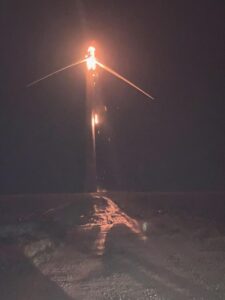
On March 25, 2023 the first of their turbines was struck by lightning and burned. The second turbine burned on May 13, of this year. The wind energy company told her that one got hit by lightning too. But there was actually no lightning in the area at the time. When she asked about lightning and fire suppression systems? They told her that it’s cheaper to clean them up after they burn than it is to maintain the lightning protection and fire suppression systems. You’ll see why later in this article when you discover what they actually did to “clean” up the mess they left behind. The company has removed the first turbine but has not cleaned up any of the debris. It is now completely worked into the ground. Because it was windy and the wind changed direction the next day, the second turbine spread debris over at least 300 acres, which included 3 neighboring farms. They now have a cornfield that is growing fast and full of wind turbine fiberglass. They bale corn stalks to feed their cows. She didn’t know what they would have done if this had happened in October as they would not have been able to feed those cows. As it is, they can’t graze them on land that is heavily contaminated with fiberglass.
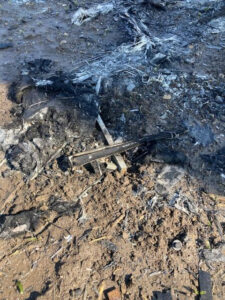
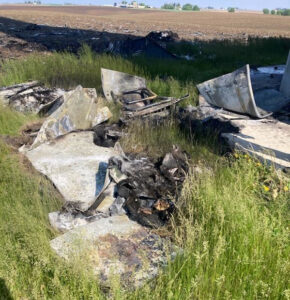
After the first fire, the wind company contracted with a clean-up crew to clean up the damage. It was three people with three shop vacs to clean up the “heavily contaminated” areas over an area of around 20 acres for three days. Yes, you read that right. Three people, three shop vacs, three days, to clean up around 20 acres of land. They have no intention of cleaning any of the land that is less heavily contaminated and plan to just leave the debris in the fields. No cleanup plan has been made yet for the second turbine, and they are not allowed to talk to the cleanup company anymore. Is it any wonder it is cheaper to “clean them up” after they burn than it is to maintain fire suppression and lightning protection systems so they don’t burn in the first place? She and her family are now picking up the debris by themselves. An instant shower is necessary to rid their bodies of the fiberglass they have handled and dug out of the dirt. Some studies have suggested that small fiberglass particles can lodge deep in the lungs and cause health problems years or even decades later. A gigantic crane has been sitting on their property for a year but has done nothing. Their soil is compacted and their drainage tiles are ruined. The erosion from the fields where cover crops could not be planted because it would hide the fiberglass is terrible. And the rain is washing the contamination into other fields.
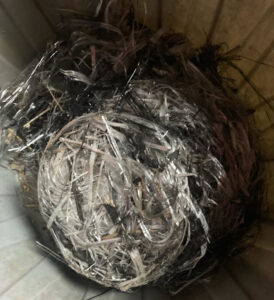
She also said the turbines have had one problem after another. Even the technicians complained about having to continually work on them. One of the biggest problems was the constant leaking of oil into the fields. Oil, as you probably know, is insoluble in water, so rain will not the dilute the oil. It will just keep getting pushed farther and farther into the ground until it eventually ends up in the aquifer, where it will contaminate rural wells with industrial machine oil. As a side note, I used to work on the ground crew at a regional airport. One of my duties was refueling large passenger aircraft up to, and including Boeing 737s and Air Force C-130 transports. If we spilled more than a few gallons of jet fuel (which is similar to kerosene and basically a type of fuel oil), we had to call in a hazmat cleanup team immediately. But it seems wind turbine companies are subject to no such regulations if one of their turbines suffers a catastrophic failure and spills dozens of gallons of industrial machine oil into the soil.
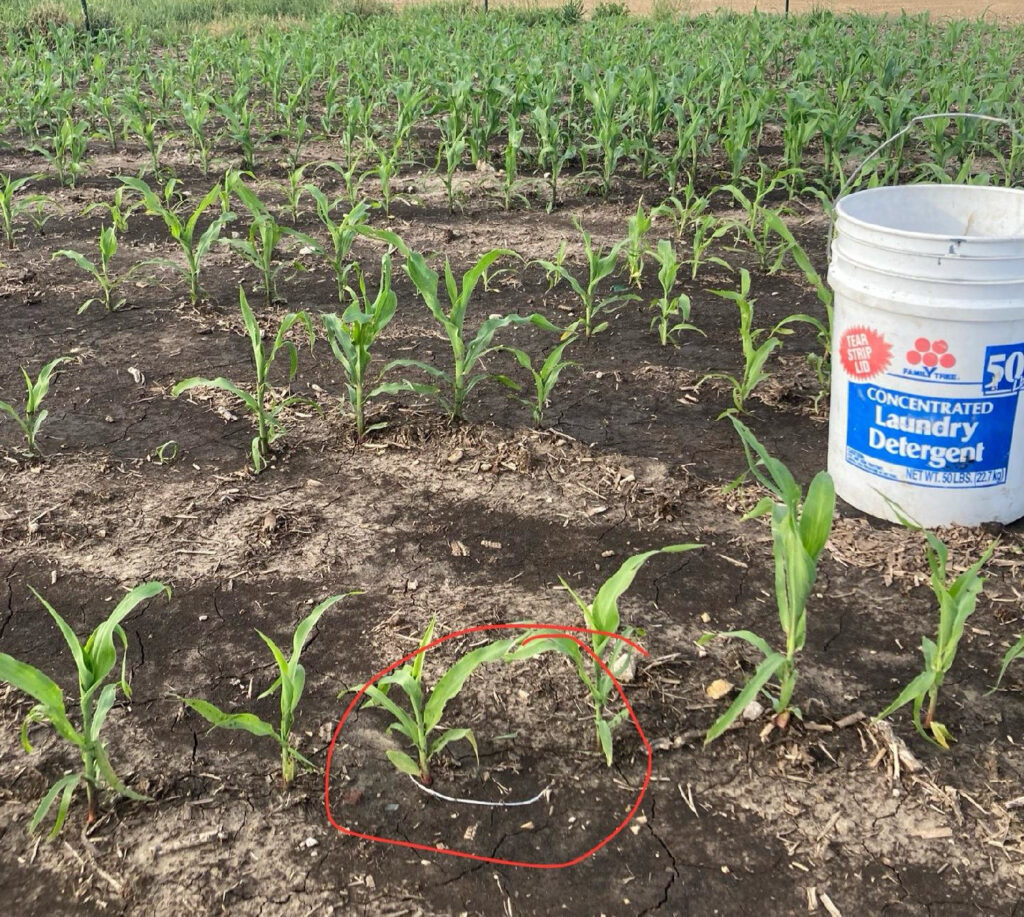
The lady who contacted us was so frustrated that she called the farmer in New York who had the same problem to see if there was any solution (you can read that article here). He said he was still waiting on NextEra after a year and a half.
Two wind turbine fires on the same farm in less than a year suggests what has been reported for years now: Wind turbine fires are far more common than we know because there is no mandatory requirement that they be reported. As this incident shows, when fires do occur, they do a lot of damage over a wide area. That’s why it’s so important that we have a strong WECs to protect landowners and all rural residents from the damage they can do. Not only to agricultural land, but the environment in general. Indeed, even to the very water we drink.
—-
Updated: This article was corrected on 6-3-2024. The original article stated that the cleanup contract was 3 people with 3 shop vacs who had 3 days to clean 300 acres. The actual contract is for them to clean heavily contaminated areas of less than 20 acres. As of now, there are no plans at all to clean anything other than the heavily contaminated areas within a distance of approximately 20 acres around the turbine.
